Twine:
Ok, I hope this works! Both links (I included two hoping that one will work) should open a new page where you will have to open the .zip file with the game, “The Missing Sock.”
I want to preface by saying: this was the most ‘tech’ thing I’ve ever done. Ever.
The End Product
The Journey
Bolter’s (2001) discussion in ‘”Hypertext and Remediation of Print” spoke to the exact route I took during this process. I figured, to avoid being inundated with hypertext, I would just be “Romantic” (p.33) and go for it, basically work quickly so “the medium wouldn’t fail my thoughts” (p.33). I am this person, a jumble of ideas. I always encourage students to mock up/pre-write their ideas and here, I should have followed my own advice. But Bolter (2001) is correct, and I will comment on this below, “the hierarchy (in the form of paragraphs, sections, and chapters) is an attempt to impose order on verbal ideas […]” (p.33). Although I was worried the hypertext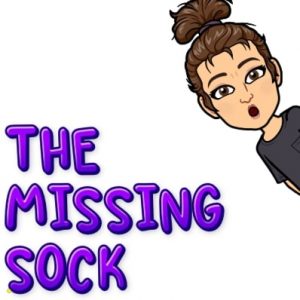 was going to somehow limit my story, in many ways it actually allowed it to flourish. The hypertext supported ‘more’ associations, ones that I may have left out, and would not consider in writing.
was going to somehow limit my story, in many ways it actually allowed it to flourish. The hypertext supported ‘more’ associations, ones that I may have left out, and would not consider in writing.
The Challenge
I was dead set on adding images to this Twine. So I perused Google for tutorials, Reddit posts, YouTube videos, etc.
The first tutorial led me to believe that I needed to house the images on my computer in a file that contained both my HTML link to the story and a subfolder for images. If I didn’t do that, I would have to rely on images on the web. I didn’t really like that idea as I wouldn’t be citing them, so I decided to use pictures on my computer.
Well, no matter how closely I watch the tutorial and followed the steps, I always got this:
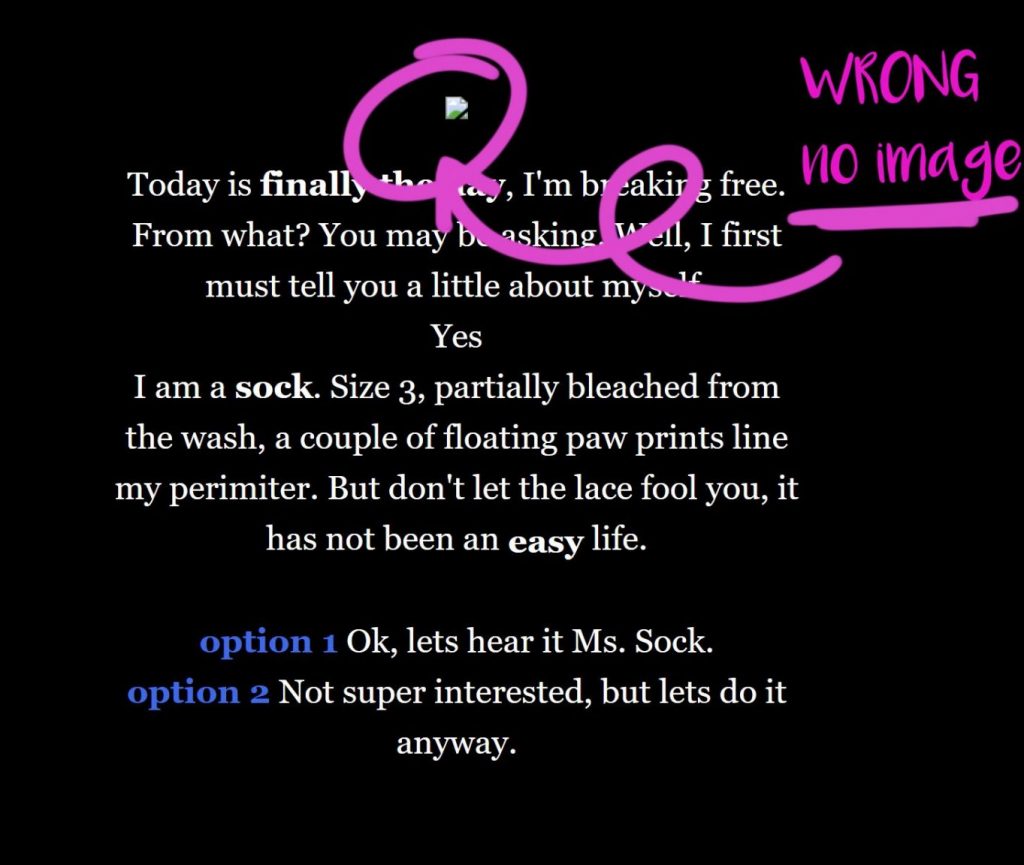
Back to the drawing board. I found ANOTHER tutorial by John Fry (2017) and this time, I was able to figure it out. Yes, I can use my own pictures, but I would have to upload them to my Google Drive and then use postimages.com to create a direct link for the photos. Once I did this and applied the proper code from the previous tutorial: <img src=…. I FINALLY figured it out. (It took half a day, sad-but true).
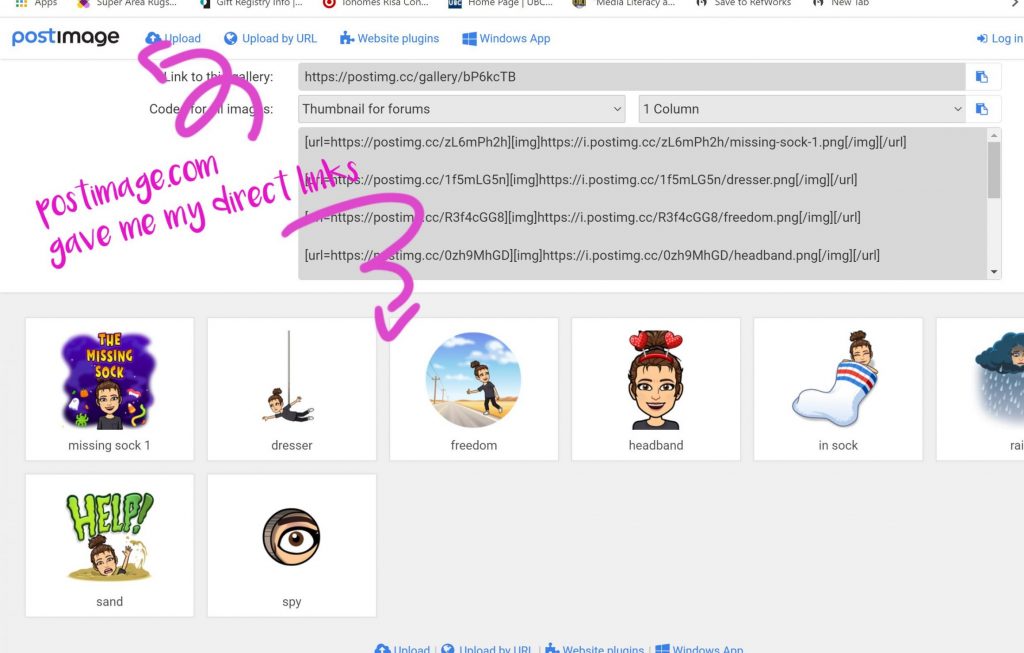
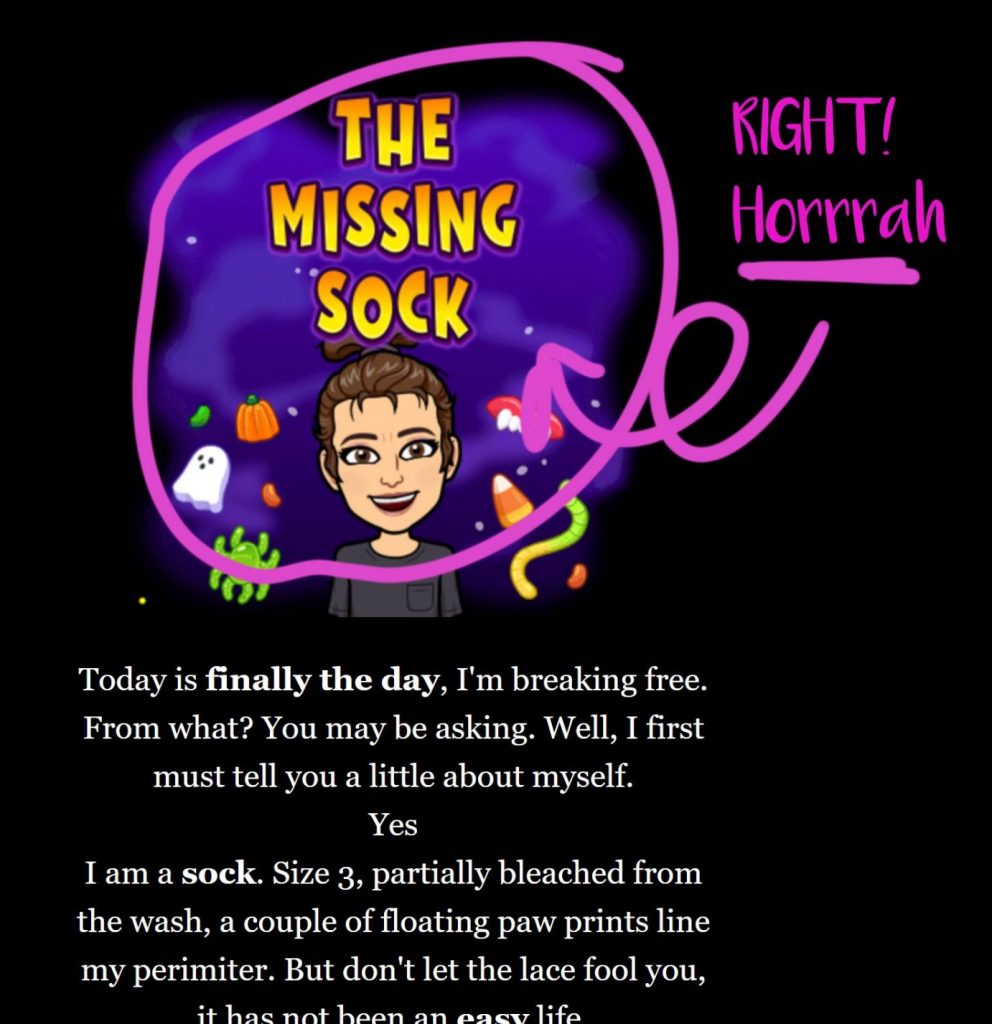
The Afterthought
Ok, so AFTER I completed the Twine, I had to go through it 564746974 times. Why? because I didn’t proofread, check the paths, count the boxes, etc. I was also fearful I was going to lose the Twine even though I downloaded the desktop version. I was immediately drawn back to paper and pen, the trusty medium, to go over the whole thing. But then I also took video of me going through the Twine as to document in another way (Also copying and pasting the story into Word). In other words, I ended up mocking up my story AFTER production. I think Twine was so foreign to me that I wanted to rely on mediums I ‘trusted’.

Big Picture: Connection to Pedagogy and Constructivism
Twine is interesting as it allows you to mimic the classic “choose your own adventure.”Now that I think about it, I think those books are so popular because the readers are given authority in a medium, (books) that are SO structured.
I teach Social Justice 12 and we recently had a Town Hall debate on Fracking in Northern BC. The town was imaginary, but the “perspectives” (Indigenous citizens, residents of the town, small business owners, environmentalists, etc) were real. Although this was a great activity, and let everyone ‘hear’ the perspectives’ of others, using Twine would have been an amazing alternative.
Why? Well, Twine makes ‘you’ exist in a place and time– so you own your own perspective. Yet, you also live vicariously through the associations, giving you insight and authority to the decisions that lay in front of these peoples. Bolter (2001) extends this point, “In following hypertextual links, the reader becomes conscious of the form or medium itself ” (p.43). In essence, this ‘text’ contains less bias, and become more objective.
Englebart’s (1963) paper also made me connect hypertext to the learning theory, constructivism. Here he makes the point that “the human mind neither learns nor acts by large leaps, but by steps organized or structured so that each one depends upon previous steps” (p.1). Therefore, hypertext – and the means of ‘making’ story and learning do align with how I think learners construct knowledge. They do ‘add’ to their constructs, similar to associations in twine and hypertext.
I’m excited to try using this next year!
References
Bolter, J. D. (2001). Writing space: computers, hypertext, and the remediation of print. New York, NY: Routledge.
Englebart, D. (1963). “A conceptual framework for the augmentation of man’s intellect.” Vistas in information handling, Volume I: The augmentation of man’s intellect by machine. Washington, DC: Spartan Books.
Fry, J. (2017, March 27). Twine- adding pictures [Video]. YouTube. https://www.youtube.com/watch?v=DRETz9wnOkk
Hammond, A. (2018, March 24). Adding images and music to your twine 2.1 game (SugarCube 2) [Video]. YouTube. https://www.youtube.com/watch?v=N_CRN9mLbUs
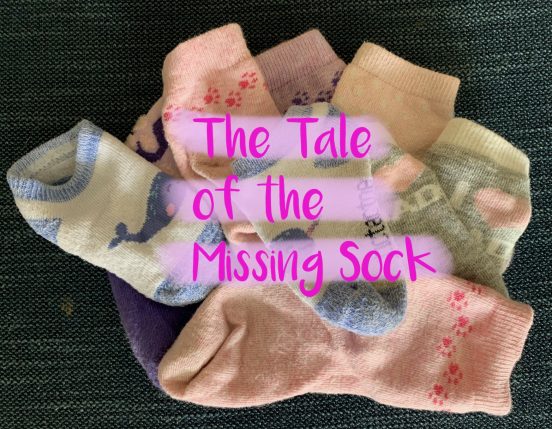


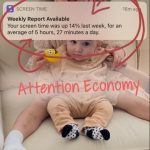
ping cao
October 22, 2021 — 11:33 pm
Hi Many,
I have wanted to comment on your posts a few times on the annotation tool that you continue to use in your posts. I love how clear those curved lines are with written text next to them. You had unutilized these techniques in many of her posts, like listing out the items in your bag, proofreading your written text, etc.
We learn how to use word processing tools to type out the text we once had to write, and with the advancement of technology, we now create prettier-looking text with other visual elements (e.g. the curve line).
Bitmoji is the other tool that you use consistently in your posts. You utilize this tool to create your own images that are more relevant to the topic/story.
Even though there were some technical hiccups but those encouraged us to dig deeper into the technologies, to find solutions, to solve our issues. The digital world plus the internet provides unlimited resources. Solutions we used to take a lot of time to find now, maybe just a few clicks away.
I enjoyed reading your post, the “why” part particularly. “Twine makes ‘you’ exist in a place and time”, well said! And with the help of technology and the internet, this presence of ‘you’ could be forever.
Excellent work, Mandy!